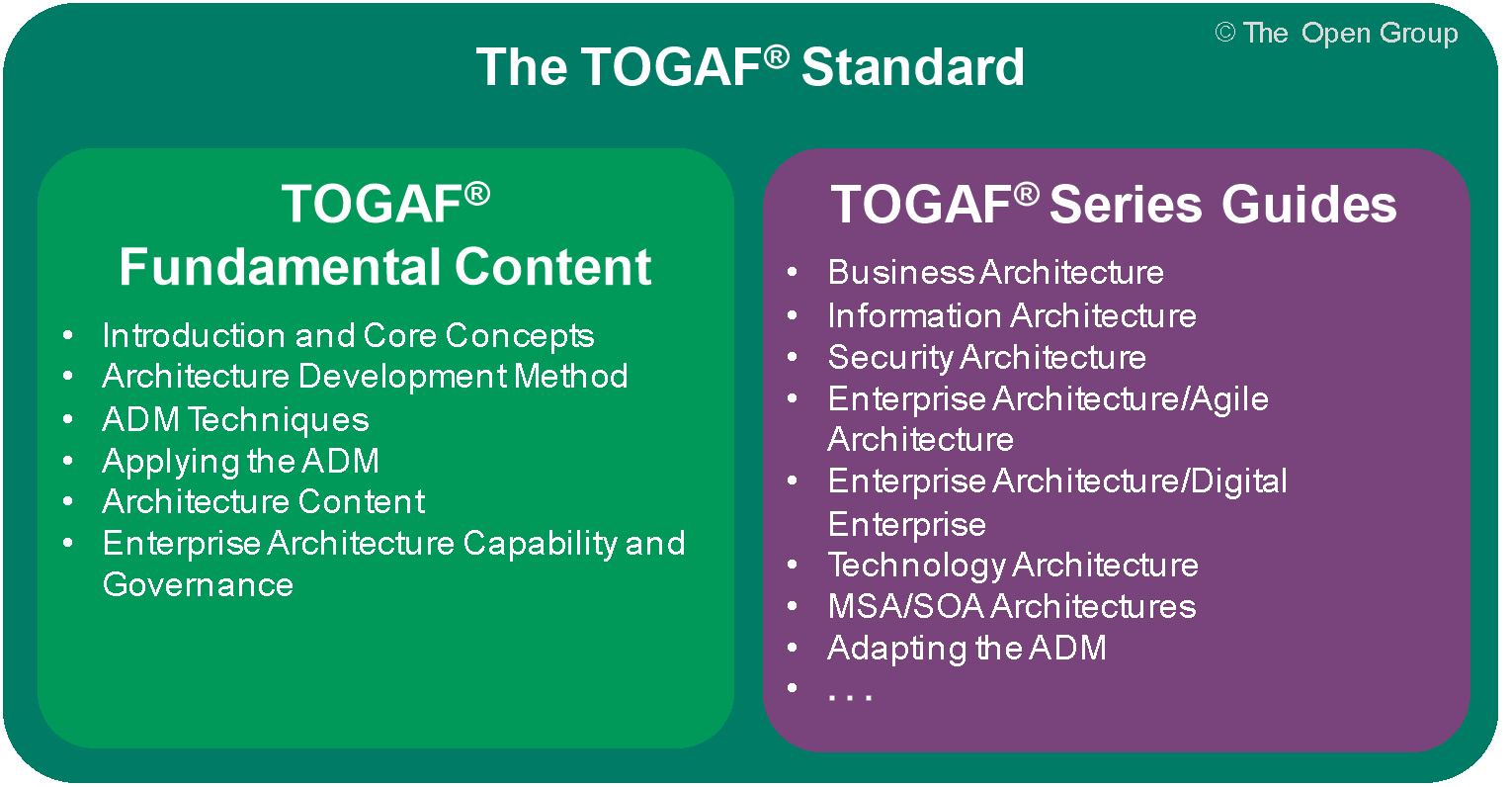Introduction to the TOGAF Standard
Welcome to the world of TOGAF, where Enterprise Architecture is not just a practice but a standardized approach to guide change and improvement. The TOGAF Standard, 10th Edition, is your key to unlocking the potential of Enterprise Architecture. Whether you’re a seasoned practitioner, a leader of an Enterprise Architecture team, or a sponsor overseeing the strategic transformation, this guide is tailored to enhance your understanding and utilization of the TOGAF framework.
Key Components of TOGAF Standard
1. TOGAF Fundamental Content: Essential Scaffolding
- Overview: The backbone of TOGAF, this section provides universal concepts and enduring best practices.
- Purpose: Offers stable guidance to develop, maintain, and use Enterprise Architecture.
2. TOGAF Series Guides: Customization and Configuration
- Overview: Complementary to the Fundamental Content, these guides focus on specific topics, providing proven, stable, and enduring best practices.
- Purpose: Guides practitioners on configuring the universal concepts according to their unique enterprise requirements.
The Structure of the TOGAF Documentation Set
Understanding the TOGAF documentation set is crucial for transitioning from universal to unique configurations within your organization.
Universal Concepts to Unique Configurations
- Universal Scaffolding: The TOGAF Standard provides a set of universal scaffolding applicable to all Enterprise Architecture practices.
- Customization: Different organizations use the same scaffolding but configure it uniquely based on their requirements.
Journey from Universal to Unique
- Version Evolution: The TOGAF Standard has evolved to better support universal and unique content.
- Restructuring: Version 9.2 marked the beginning of restructuring, liberating specialists to speak to their specific domains.
- TOGAF Series Guides: These guides, such as those addressing Risk, Security, and Business Architecture, provide specialized best practices.
Document Structure
- Modularity: The TOGAF Standard document structure is modular, providing a clear hierarchy from universal concepts to stable best practices and emerging ideas.
- Hierarchy: From TOGAF Fundamental Content to TOGAF Series Guides and TOGAF Library, each level offers a different perspective on Enterprise Architecture.
- Stability: The TOGAF Fundamental Content is expected to be the most stable, offering enduring concepts.
- Expansion: TOGAF Series Guides will grow as the body of knowledge expands, providing more stable best practices.

What’s Next?
Having laid the groundwork, you’re now ready to embark on your journey with the TOGAF Standard, 10th Edition. Whether you’re configuring your Enterprise Architecture team, developing your method, or documenting your enterprise’s architecture, the TOGAF Standard provides the common concepts, structure, and enduring best practices to guide you.
Summary of Changes (Version 9.2 to 10th Edition)
Before diving in, take a moment to review the changes outlined in Appendix A for a seamless transition from Version 9.2 to the latest TOGAF Standard.
In the transition from Version 9.2 to the TOGAF Standard, 10th Edition, several key improvements have been introduced:
- Easier Adoption of Best Practices:
- The 10th Edition facilitates the adoption of best practices, making it more accessible for practitioners.
- It guides users to enduring and universal concepts, proven best practices, and highlights areas for exploring new emerging ideas.
Broad Applicability Across Sectors:
- The TOGAF Standard is not limited to specific industries; it is used by small, medium, and large businesses, government departments, non-government organizations, and defense agencies.
- Its adaptability allows it to cater to diverse organizational structures and needs.
Enhanced Guidance for Efficiency:
- The 10th Edition provides greatly expanded guidance and how-to material, empowering organizations to operate efficiently and effectively.
- It covers a broad range of use-cases, including agile enterprises and Digital Transformation.
Designed for Universal Concepts and Variable Configuration:
- The TOGAF Standard is intentionally designed to balance common universal concepts with variable detailed configuration, allowing for customization based on specific enterprise requirements.
Improved Document Structure:
- The document structure prioritizes what architects need—more, better, and topical guidance for delivering optimal Enterprise Architecture.
It is divided into the TOGAF Fundamental Content, offering essential scaffolding, and the TOGAF Series Guides, which provide advice on configuring the scaffolding.
Overall, these changes in the 10th Edition aim to enhance the user experience, promote universal applicability, and provide a more structured and user-friendly approach to adopting and configuring the TOGAF Standard for effective Enterprise Architecture practices.
Conclusion
The TOGAF Standard, 10th Edition, is your compass in the dynamic landscape of Enterprise Architecture. With its universal concepts, stable best practices, and room for emerging ideas, TOGAF empowers organizations of all sizes and sectors to tailor their Enterprise Architecture practices for success. As you explore the TOGAF documentation set, remember that your customization is what transforms universal scaffolding into a uniquely configured Enterprise Architecture that aligns with your organization’s needs.